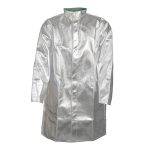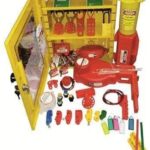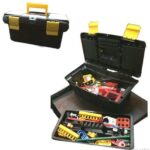Your list is empty, add products to the list to send a request
Fire Detection Systems: Protecting Your Property with Early Warning

25
Jul
Introduction
In today’s world, where safety is paramount, fire detection systems play a crucial role in protecting lives and property. These sophisticated systems provide early warnings of potential fire hazards, allowing for swift action and minimizing damage. This article will explore the various aspects of fire detection systems, their importance, and how they integrate with other fire safety equipment to create a comprehensive protection strategy.
The Importance of Early Detection
Fire can spread rapidly, making early detection critical for effective response. Modern fire detection systems are designed to identify the earliest signs of fire, such as smoke, heat, or specific gas emissions. This early warning can make the difference between a minor incident and a catastrophic event.
Key Components of Fire Detection Systems
1. Smoke Detectors
Smoke detectors are the most common and recognizable components of fire detection systems. They work by detecting particles in the air that are produced by combustion. There are two main types:
– Ionization detectors: Sensitive to small smoke particles produced by fast-flaming fires.
– Photoelectric detectors: Better at detecting larger smoke particles from smoldering fires.
Heat detectors respond to temperature changes in the environment. They are particularly useful in areas where smoke detectors might give false alarms, such as kitchens or dusty environments.
3. Flame Detectors
These specialized detectors use optical sensors to detect the specific wavelengths of light produced by flames. They are often used in industrial settings or areas with high ceilings.
Gas detectors, such as LPG gas leak detectors, are crucial for identifying potentially explosive or toxic gas leaks before they lead to fire or health hazards.
5. Control Panels
The control panel is the brain of the fire detection system. It receives signals from various detectors and initiates appropriate responses, such as sounding alarms or notifying emergency services.
These include audible alarms like fire hooters and hooter alarms, as well as visual indicators like strobe lights. Emergency exit lights are also crucial for guiding occupants to safety during an evacuation.
Integration with Fire Suppression Systems
Fire detection systems often work in tandem with suppression systems for a comprehensive fire protection strategy:
1. Sprinkler Systems
When heat is detected, sprinkler heads activate to suppress the fire. The rosette plate around each sprinkler head ensures a neat installation and proper water distribution.
Various types of extinguishers, including foam type fire extinguishers, gas fire extinguishers, and specialized kitchen fire extinguishers, should be strategically placed throughout the premises. Fire extinguisher hanger hooks ensure these crucial devices are easily accessible.
3. Innovative Solutions
New technologies like the fire extinguisher ball or elide fire ball offer alternative methods for rapid fire suppression, especially in hard-to-reach areas.
4. Water Supply Systems
For larger buildings, hose reels with hose reel drums and hose reel pipes provide an additional layer of fire-fighting capability. The 4 way fire brigade inlet allows fire departments to supplement the building’s water supply if needed.
Maintenance and Testing
Regular maintenance and testing are crucial for ensuring the reliability of fire detection systems:
1. Visual Inspections
Regular visual checks can identify obvious issues like damaged detectors or obstructed sprinkler heads.
2. Functional Testing
Periodic testing of detectors, alarms, and control panels ensures all components are working correctly.
3. Battery Checks
For systems with battery backup, regular checks and replacements are essential to ensure operation during power outages.
4. Professional Servicing
Annual inspections by certified professionals can identify and address potential issues before they become problems.
Personal Protective Equipment in Fire Safety
While not directly part of detection systems, personal protective equipment (PPE) is crucial for those responding to fire alarms:
– Bata hunter shoes and atom safety shoes provide protection against heat and falling debris.
– Liberty police shoes offer durability and protection for first responders.
– Agni suraksa fire-resistant clothing protects firefighters and industrial workers in high-risk environments.
– Armour can provide additional protection for those entering dangerous areas during a fire.
Advanced Features of Modern Fire Detection Systems
As technology advances, fire detection systems are becoming increasingly sophisticated:
1. Addressable Systems
These systems can pinpoint the exact location of a triggered detector, allowing for faster response times.
2. Smart Integration
Modern systems can integrate with building management systems, automatically shutting down HVAC systems to prevent smoke spread or unlocking doors for evacuation.
3. Remote Monitoring
Many systems now offer remote monitoring capabilities, allowing property managers or security teams to receive alerts and monitor the system from anywhere.
4. AI and Machine Learning
Advanced algorithms can help reduce false alarms by learning to distinguish between normal environmental changes and actual fire indicators.
5. Wireless Systems
Wireless detectors offer greater flexibility in installation and can be particularly useful in historic buildings where wiring might be challenging.
Designing an Effective Fire Detection System
When designing a fire detection system, several factors must be considered:
1. Building Layout
The size, shape, and layout of the building will influence the type and placement of detectors.
2. Occupancy Type
Different occupancies (e.g., residential, commercial, industrial) have different fire risks and detection needs.
3. Environmental Factors
Factors like humidity, temperature extremes, and airflow can affect detector performance and must be accounted for in system design.
4. Local Regulations
Compliance with local fire codes and regulations is essential when designing and installing fire detection systems.
5. Integration with Existing Systems
New detection systems should integrate seamlessly with existing fire safety equipment like fire extinguisher cylinders, safe pro fire extinguishers, and evacuation tools like fire axes.
The Human Element in Fire Safety
While advanced detection systems are crucial, the human element remains vital in fire safety:
1. Training
Regular training ensures that building occupants know how to respond to fire alarms and use safety equipment properly.
2. Fire Wardens
Designated fire wardens should be trained in evacuation procedures and the use of fire-fighting equipment.
3. Evacuation Drills
Regular drills help familiarize occupants with evacuation routes and procedures.
4. Maintenance Staff
Well-trained maintenance staff can ensure that fire detection and suppression systems remain in good working order.
Future Trends in Fire Detection
The field of fire detection is continually evolving. Some emerging trends include:
1. IoT Integration
Internet of Things (IoT) technology is allowing for more interconnected and responsive fire safety systems.
2. Drone Technology
Some companies are exploring the use of drones for fire detection in large outdoor areas or industrial complexes.
3. Nanotechnology
Advances in nanotechnology may lead to more sensitive and accurate detectors.
4. Environmental Sustainability
There’s a growing focus on developing fire suppression agents and systems that are more environmentally friendly.
Legal and Insurance Considerations
Properly installed and maintained fire detection systems can have significant legal and insurance implications:
1. Compliance
Ensuring your fire detection system meets all relevant codes and standards can protect you from legal liabilities.
2. Insurance Premiums
Many insurance companies offer reduced premiums for properties with advanced fire detection systems.
3. Documentation
Keeping detailed records of system installation, maintenance, and testing can be crucial in the event of an incident.
The Role of Professional Consultation
Given the complexity of modern fire detection systems, professional consultation is often essential:
1. Risk Assessment
Fire safety professionals can conduct thorough risk assessments to determine the most appropriate detection and suppression strategies for your property.
2. System Design
Experienced designers can create a fire detection system that meets your specific needs while complying with all relevant regulations.
3. Installation and Commissioning
Professional installation ensures that all components are correctly placed and functioning as intended.
4. Ongoing Support
Regular professional inspections and support can help maintain the effectiveness of your fire detection system over time.
Fire detection systems are a critical component of any comprehensive fire safety strategy. By providing early warning of potential fire hazards, these systems save lives, protect property, and offer peace of mind. From basic smoke detectors to advanced integrated systems, the field of fire detection continues to evolve, offering increasingly sophisticated protection against the ever-present threat of fire.
FAQs
1. Q: How often should fire detection systems be tested?
A: Firesupplies recommends monthly testing of alarm sounds and indicator lights, with a full professional inspection at least annually. However, specific requirements may vary based on local regulations and the complexity of your system.
2. Q: Can Firesupplies help design a custom fire detection system for my property?
A: Absolutely! Firesupplies offers comprehensive fire safety consultations, including custom system design tailored to your specific property and needs. Our experts consider all aspects of your building and occupancy to create an optimal detection strategy.
3. Q: What’s the difference between conventional and addressable fire detection systems?
A: Conventional systems divide the property into zones, while addressable systems can pinpoint the exact detector that’s been triggered. Firesupplies offers both types and can help you determine which is best for your situation.
4. Q: How do I maintain my fire detection system between professional inspections?
A: Firesupplies recommends regular visual checks of all detectors and control panels, keeping them clean and unobstructed. We provide detailed maintenance guidelines with all our systems and offer training for your staff if desired.
5. Q: Can Firesupplies integrate a new fire detection system with our existing fire safety equipment?
A: Yes, Firesupplies specializes in integrating new detection systems with existing equipment, ensuring a cohesive and comprehensive fire safety strategy. We’ll work with your current setup to enhance your overall protection.
Conclusion
Don’t leave your property’s fire safety to chance. At Firesupplies, we’re committed to providing state-of-the-art fire detection systems tailored to your specific needs. From initial consultation and system design to installation, maintenance, and ongoing support, we’re with you every step of the way. Our comprehensive range of fire safety products, from advanced detection systems to essential equipment like fire extinguishers and personal protective gear, ensures you have everything you need for complete fire protection. Contact Firesupplies today for a free fire safety assessment and take the first step towards a safer, more secure property. Remember, when it comes to fire safety, early detection is key – and Firesupplies is here to help you stay one step ahead of potential dangers.







































